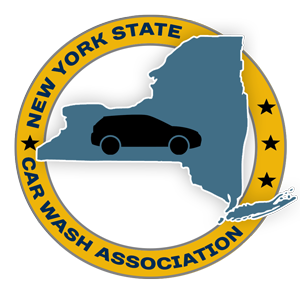In the grand scheme of things, there are two unsung heroes of the tunnel car wash. If they were on a football team, they’d be the offensive linemen. The guys you only hear about when they make a mistake. If they played baseball, they’d be the right fielder on a team playing vs all right handed batters. If golf was their game, they’d be the caddy. Show up, do the job, don’t get noticed.
There’s nothing sexy about them. They don’t get flashing lights, huge soap dumps, or fog machines.
But if these two components aren’t working, neither are you, so you best be looking after them.
Let’s start with the obvious one, your conveyor. Your conveyor comes in contact with every car you wash. If it breaks down you have two options, 1: close down till it’s repaired, 2: hand wash cars till it’s repaired.
Neither of those options sound very appealing, do they?
Today’s conveyors are light years ahead of the conveyors of even 10 years ago. The old bulky spring used to tension the chain in the past has been replaced with smooth air shocks that adjust with the twist of an air regulator.
The old forks that used to slam up to the top deck to raise a roller took a back seat when triangular roller-up forks that smoothly bring up a roller were invented. Greasing became easier when grease fittings were brought out of the box below the ground up to the surface where they were more accessible.
Chains can be ordered now, not with pins and cotters, but with dog bones, or open links to easily remove links and swap out rollers.
So, why is it, that with all the improvements made to modern conveyors, it is still one of the most neglected maintenance items in your tunnels when it should be one of your priorities? If you watch any of the CarWash College Maintenance videos online, it will walk you through the daily, weekly and monthly maintenance that needs to be performed. These videos feature Sonny’s equipment in them yes, but, if you think about it, bearings are bearings and cylinders are cylinders, so this information translates to all manufacturers equipment. Regardless of who made it, it needs to be maintained to run at its optimum. I strongly recommend you download the videos, or your manufacturer’s manual, and follow the recommended schedule. The chain you save can be your own!
What other component could possibly fall into the same category of importance as your conveyor?
How about the one that not even your conveyor can run without, your air compressor! What runs on air? Easier question, what doesn’t run on air in your tunnel? Air retracts your brushes, makes foam, flips nozzles and high pressure pieces. It also keeps tension on your chain, helps to raise rollers and can be found in tools used for detailing. Without air, you can close your doors yet again, or become a hand wash!
What’s the best thing to do when your compressor goes down? Switch to your backup compressor! You know the importance of air to your operation, so have two working compressors and rotate them.
Compressor maintenance is very minimal. Most tanks even drain automatically nowadays. Read your manufacturer’s manual and follow it.
One last thing about compressors. If you don’t already have a dryer for your compressor, you should get one. Compressed air by nature carries moisture. Mac valves, cylinders, and shocks dislike dampness and will fail prematurely if supplied wet air. Air dryers are relatively cheap when compared with the alternative of constantly swapping out the parts ruined my moisture.
Conveyor and compressor maintenance can be mundane, yes. The consequences of not doing them, however, can be catastrophic for your bottom line.
Bob Fox has over 30 years industry experience and is an instructor at CarWash College™. Bob can be reached at BFox@sonnysdirect.com. For more information about CarWash College™ certification programs, visit www.carwashcollege.com or call the registrar’s office at 1-866-492-7422.

